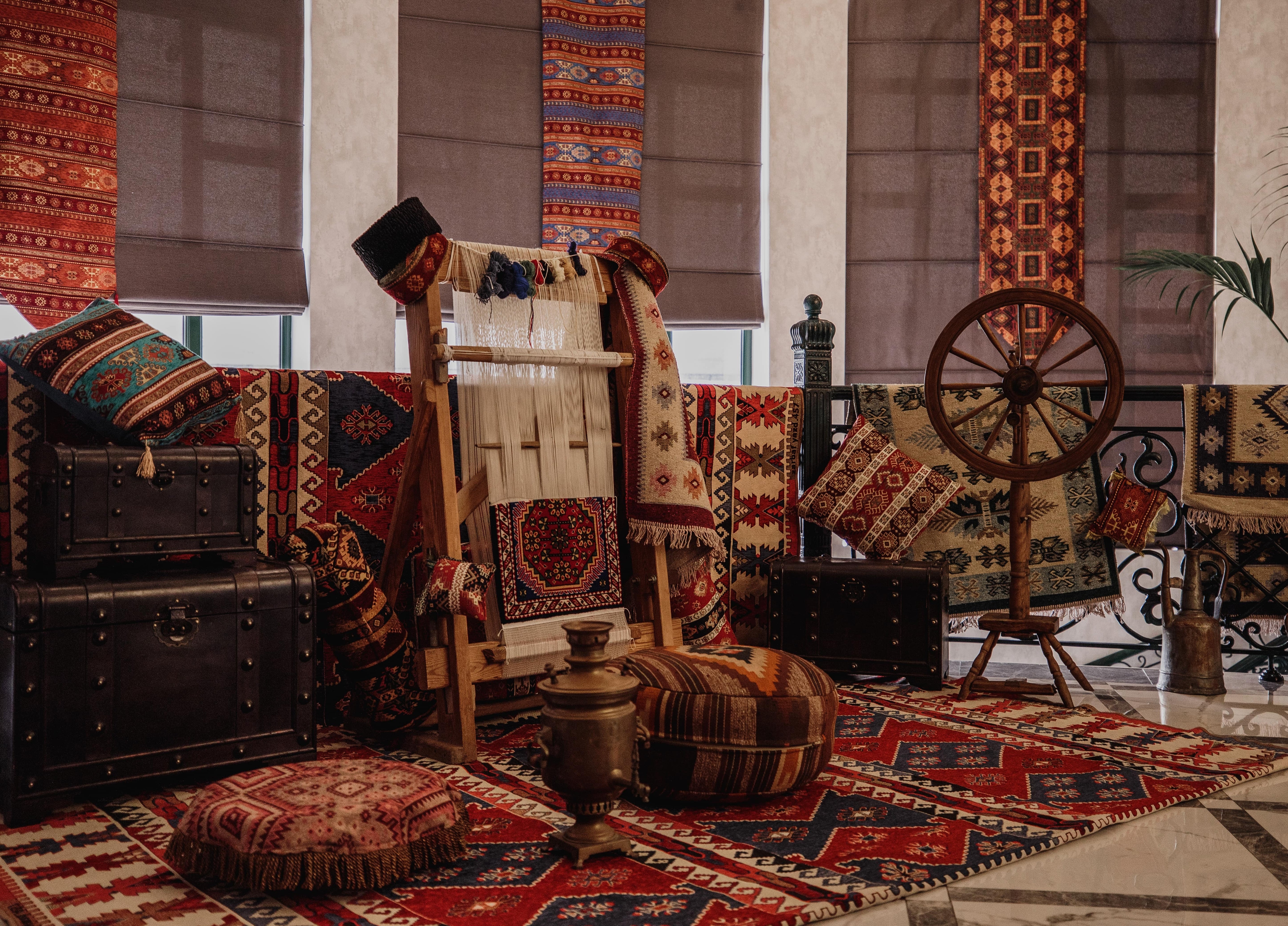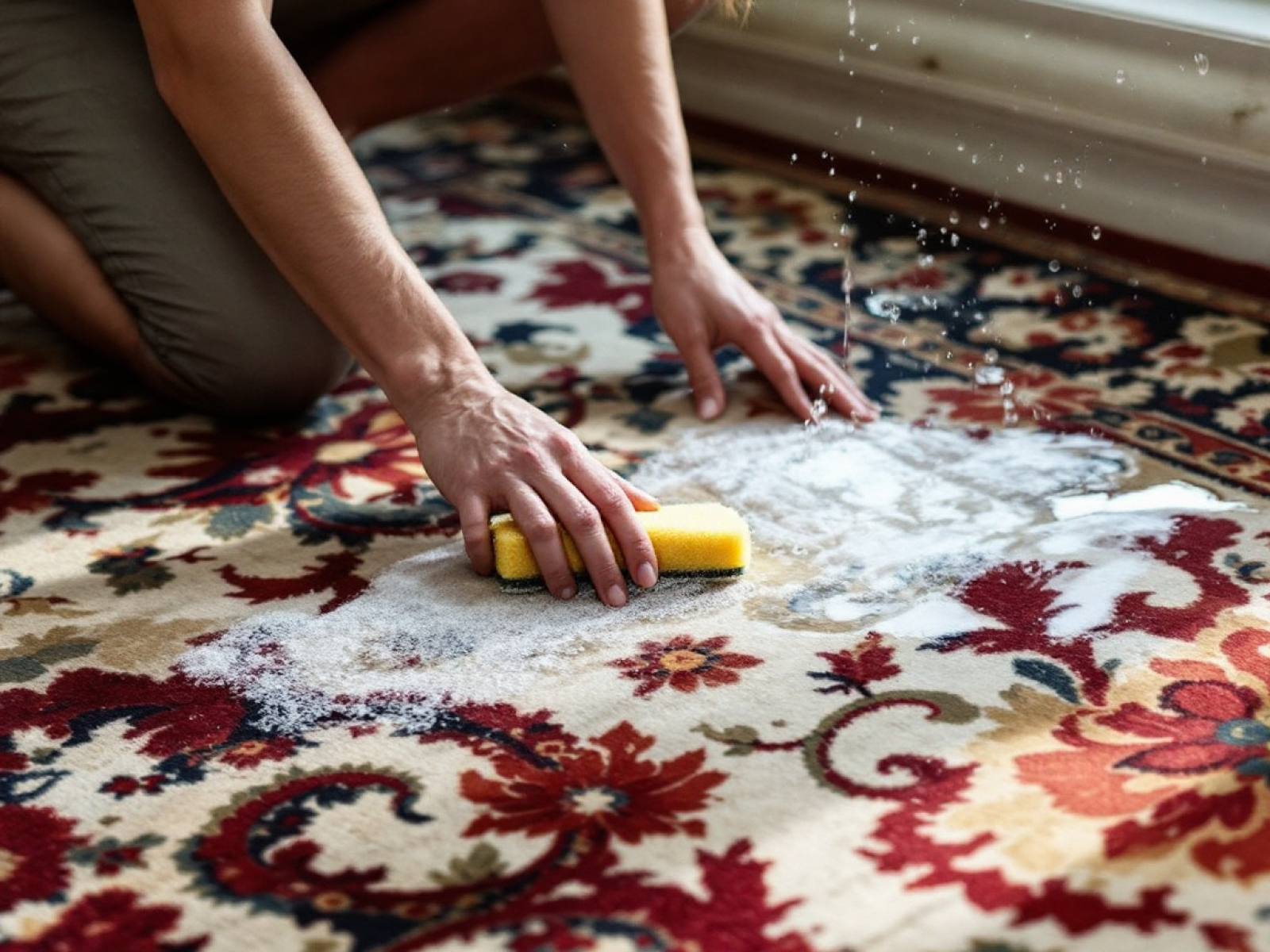Outline
- Introduction
- A Brief History of Persian Rugs
- First Persian Rug
- Ancient Weaving Techniques and Materials
- Reflection of Culture and Tradition in Antique Persian Rugs
- Revolution and 19th Century
Handmade Persian rugs encapsulate a rich history and have fascinated people from across the globe. The demand for Persian rugs has surged and a cult following has been observed in recent years. These rugs are celebrated for their cultural significance, let alone fineness. The origin of Persian rugs holds significant importance in understanding their chronological trajectory.
Tracing down memory lane, Persian rugs originated from the Achaemenid Empire. This empire reigned from 550 B.C. to 350 B.C., spanning Europe, Asia, and Africa. However, bamboo and plant stalks became the initial materials for knotting Persian rugs. These materials served their purpose but they lacked comfort and luxury.
The First Persian Rug
The Pazyryk Carpet
In 1948 archaeologists discovered a treasure hidden high in the Altai Mountains of Siberia. The world’s oldest hand-knotted oriental rug, the Pazyryk carpet, was found. It was found in the grave of an Altai prince near Pazyryk, 5,400 feet above sea level. This incredible revelation instantly captured the world’s attention. The rug’s impeccable weaving and subtle yet profound design revealed that ancient weavers mastered their art long before history books gave them credit.
Radiocarbon dating pinpointed the rug’s creation to the 5th century B.C., making it an astounding 2,500 years old. But this artifact tells a deeper story. The rug’s advanced weaving techniques and detailed patterns suggest that carpet weaving existed for centuries before the Pazyryk carpet, possibly dating back 4,000 years.
The Pazyryk carpet is a testament to ancient artisans' creativity and skill. Its vivid patterns and complex construction reflect not only a functional purpose but also a sense of artistry that defines the culture of its makers. Today, this historic masterpiece resides in the Hermitage Museum in St. Petersburg, Russia, where it continues to amaze visitors from around the world.
Early Weaving Techniques and Materials
The long tradition of handmade Persian rugs excites readers to decipher the techniques adopted for weaving alongside understanding the materials. For some reason, the early weaving techniques remain mysterious to date. Different readings and research suggest that different weaving techniques were projected in the process including flat-weaving, pile weaving, and many others.
However, the initial materials employed in weaving included bamboo, plant stalks, wool fibers, and several other materials. Weavers primarily relied on wool, prized for its softness, durability, and ability to hold vibrant dyes. Silk, a luxurious and shimmering material, was often reserved for more intricate and high-value pieces, showcasing the weaver's expertise. Cotton served as a sturdy foundation, forming the warp and weft threads in many rugs. Natural dyes, extracted from plants, insects, and minerals, infused these materials with rich, lasting colors. Madder root provided deep reds, indigo created bold blues, and saffron produced golden hues, giving Persian rugs their signature elegance and charm.
Reflection of Culture and Tradition in Antique Persian Rugs
Since the beginning, Persian rugs have not only served the purpose of decoration and floor covering. These rugs have been a noticeable component in the exuberance of luxury, prestige, and diplomatic gifting. Since then, this culture prevailed and contributed to the cultural identity of the region.
Centuries and decades passed but the remains of their existence are quite evident through art and culture. Similarly, rugs carried the footprints of each century through their profound and surgical design patterns. The musical patterns of Persian rugs of different ages speak volumes on their behalf. Starting from the Sasanian era to the rise of Islam and the era of Caliphets, the cultural impacts and revolutions were articulated through delicate designs.
Similarly, the Seljuk invaded Anatolia and northwest Persia resulting in the emergence of Turko-Persian tradition. As we say, time flies by, and so does the Seljuk time passes by and the Mongol influence settled their wings into Persia. The antique Persian rugs depict the influences of invasion in those times and times ahead. Moving forward, the Safavid and Qajar dynasties played an influential role in flourishing art and culture in their respective reigns.
Persian Rugs in the 19th Century
In the 19th century, Persian rugs faced both challenges and newfound opportunities as global interest in these masterpieces surged. The expansion of trade routes and European colonization introduced Persian rugs to Western markets, where their designs and exceptional craftsmanship were highly sought after. However, this increased demand brought challenges.
To meet growing production needs, many manufacturers shifted focus from hand-knotted quality to mass production, risking the loss of traditional weaving techniques and the cultural essence and legacy. Natural dyes were replaced with cheaper synthetic alternatives, compromising the rug's timeless aesthetic.
Conclusion
The journey of handmade Persian rugs through history is a tale of artistry, cultural heritage, and resilience. From their humble beginnings in the Achaemenid Empire to their celebrated status in the 19th century and beyond, Persian rugs have consistently reflected the essence of the times and the spirit of their makers. Each thread tells a story, weaving together tradition, innovation, and the influences of changing dynasties and global demand.
Despite facing challenges like industrialization and shifting markets, Persian rugs have retained their charm and authenticity. Today, they are not just functional or decorative items but cherished symbols of heritage and tradition. As timeless masterpieces, Persian rugs continue to inspire admiration, preserving the legacy of handmade rugs for generations to come.




